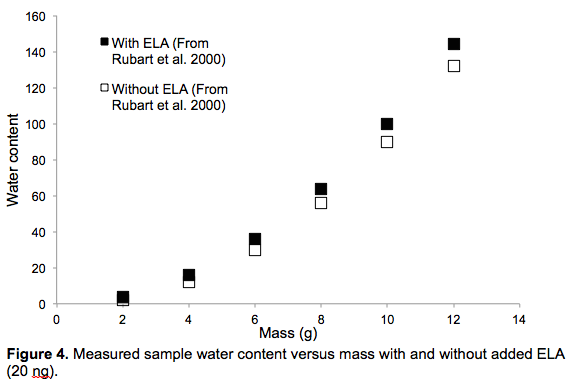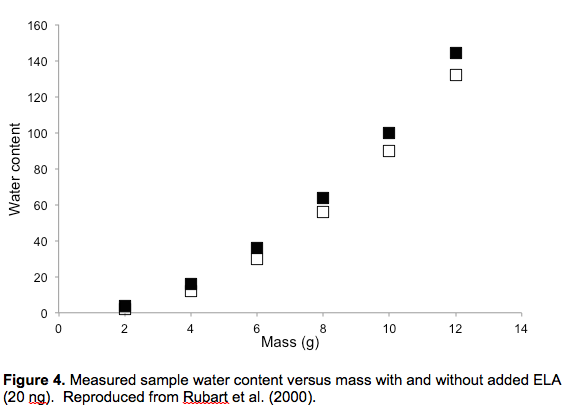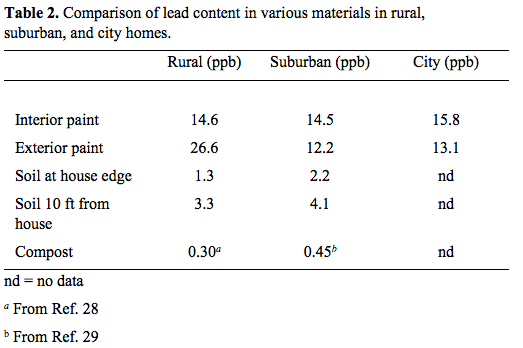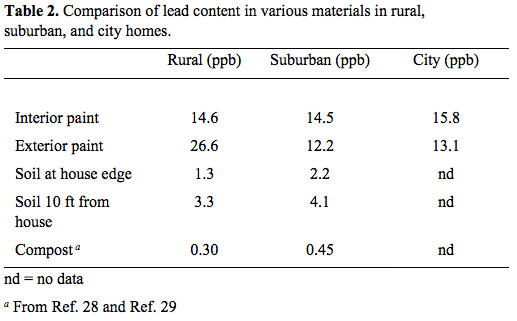There are hundreds of ways to cite information in your work, yet each journal accepts only one particular format. It can be incredibly confusing as you write for different classes which style you should use; in most cases, however, the key is consistency. First, check with your professor (or publication of choice) to see which style they prefer. If you still have options, choose a style and maintain it throughout all of your citations and references.
[bg_faq_start]
How to cite a work in your text
Where do citations go?
Remember that any data or idea that you got from someone else must be cited if it is not general knowledge. (If this concept isn’t familiar to you, see this page.)
As soon as you finish stating the information or idea that originated from someone else, insert a citation into the text. This means that citations can come in the middle of a sentence, if only part of your statement refers to someone else’s work, or at the end, if the sentence only refers to information that you got from that source.
How do I cite information that came from multiple sources?
If multiple studies have confirmed a finding or you have synthesized the findings of multiple studies into one piece of information, you need to cite all of the studies involved. Note that if many studies (i.e. more than 3 or so) have published a given finding, you may need to verify that this information is not common knowledge (in which case you shouldn’t cite it), and if not, only cite the most important and relevant works.
If you know of many relevant works, but referencing only one or two is sufficient, you may choose to cite those works as examples, such as in the following statement:
Since the end of the LIA mountain glaciers are mainly retreating, and in several cases their present size is smaller than at any time since at least 5,000 years (e.g., Orombelli 2011; Thompson et al. 2013). (Adapted from Frezzotti and Orombelli, 2104)
Multiple citations should be identified separately but at the same place in the text. Separate citations by a comma or a hyphen (if they span more than 2 consecutive numbers). For example:
Copper has been shown to be a contaminant in over 30 major water supplies to the US.1,8 Zinc, lead, and aluminum have also been identified in the majority of water sources in the Northeast.9-11
The exact format of the citations depends on the style you use (see below) but should be consistent throughout your paper.
What do citations look like?
Because you are paraphrasing information from other sources, citations will follow any information that was originally published somewhere else.
References may be named along with a citation depending on the particular type of information presented, your discipline, and possibly your professor’s expectations. Generally, references are only named if the associated information is usually known in the context of its author(s), or the authors’ names are especially important for some other reason, on a case-by-case basis.
For a routine finding or procedure, the authors do not need to be mentioned in the text. For example:
The NMR spectrum has been confirmed by Biyuan et al. (2008)3 as consisting of a doublet of doublets.
Should be replaced with: The NMR spectrum has been confirmed as consisting of a doublet of doublets.3
However, if you followed someone else’s detailed protocol, their name would be appropriate, such as:
Proteins were extracted according to the protocol of Raymond et al,13
since it is important to draw attention to that work itself. Other times, a finding or insight that is widely attributed to a specific paper may warrant an explicit reference to the authors in order for your reader to quickly recognize the finding/insight/idea you are referring to.
How do I cite multiple sentences that all come from the same original work?
This can be confusing because citing just one piece of the information could make it look like you haven’t properly cited the rest of it, but you also don’t want to cite every single sentence with the same reference. Thus, the best thing to do is to cite the first sentence and then make it clear that the others also relate to that reference through your wording.
For example: Copper has been shown to be a contaminant in over 30 major water supplies to the US.4 This study also identified zinc, lead, and aluminum contaminants in the majority of water sources in the Northeast.
If referring back to the reference is too awkward in a particular case, it is okay to repeat the citation. Remember that you should do whatever is most clear and concise.
Note: If you find yourself in this situation often—that is, having to cite the same source in multiple consecutive sentences—it is a pretty good sign that you are not using enough sources. The majority of your paper or a paragraph in your paper should not rely heavily on just one or a few sources. You should probably do more literature research before continuing to write!
[bg_faq_end]
[bg_faq_start]
Common in-text citation styles
1. Author-date format
The authors’ last names and the year of publication are used.
- The citation is separated from the rest of the text by parentheses ( ) or brackets [ ].
- Authors’ names are usually separated from the year by a comma.
- Publications with many authors name the first author(s) followed by et al. and the year.
- Most chemistry and geology journals require at least 3 authors before reverting to the “et al.” format, when only the first author is then named.
- Most biology and physics journals require “et al.” to be used for any more than 2 authors.
- Multiple citations are separated by semicolons.
- Multiple citations are listed in alphabetical order.
If the authors are named in the sentence, the year is placed directly afterward in parentheses or brackets.
Examples
Requiring a second signal-to-noise ratio of 3:1 reduced the number of predictions (Moss et al., 2004).
Lewis and Davidson (2009) found this method to be at least 90% accurate.
By analogy with microwave electronics, this technology has been given the name “lightwave electronics” [Goulielmakis and Krehl, 2007].
If the gate is much shorter than the process traced, the signal has been found to range from the attosecond to the femtosecond scales (Bauer and Silk, 2010; Kaba et al., 2003; McMahon and Barnes, 2011; Tommen, 1991).
…
|
How to properly write “et al.”
|
2. Numbered references
A number is assigned to each reference; the number, not the authors’ names, is used throughout the text.
- Once you have assigned a source a number, re-use that number throughout the text.
- In the citation-sequence format (more common), references are numbered in the order that they appear in the text (so that 1 refers to the first reference you cite).
- In the citation-name format (less common), references are ordered alphabetically, and numbers refer to the references in that order (so that 1 refers to the reference that comes first alphabetically).
- If the authors are named in the sentence, place the citation number immediately afterwards.
2A. Superscript numbers
- Numbers should come immediately after the information used from that source, but whether or not the number occurs before or after any commas or periods depends on the journal.
- Use commas (with no spaces) between numbers.
- If you have more than two numbers in a continuous sequence, join the first and last number of the sequence by a hyphen.
2B. Numbers in parentheses
- Place numbers immediately after the information used from the source and before any commas or periods.
- Numbers may be italicized or not, depending on the journal.
- Numbers may be in brackets [ ] or parentheses ( ) depending on the journal.
- Place a space between the text and the brackets or parentheses.
- Use commas (with spaces) between numbers.
- If you have more than two numbers in a continuous sequence, join the first and last number of the sequence by a hyphen.
Examples
According to Barnes et al. [20], the ligand is involved in coupling CO2 with epoxides.
High concentrations of molecular gas have been identified in ultraluminous galaxies (4, 6-8, 12).
Allose has been found to inhibit growth of human ovarian,5 head and neck,12 cervical,2 and multiple prostate8,13 and liver12 cancer cell lines in vitro.
The majority of Arctic permafrost is comprised of carbon-poor cryosols3-5.
[bg_faq_end]
[bg_faq_start]
Formatting citations in figures and tables
When citing information in figures and tables, the most important thing to keep in mind is clarity. Excess numbers and information, when used poorly, can make a figure or table to look messy or be confusing or misleading. Therefore, even when using a numbered references format (see above), you should avoid using numbered citations in tables and figures, since these could be confused with your data.
Like in most writing, there is no one, universally accepted method for citing information in these forms. However, in general, consider following these guidelines:
In tables, use superscripted letters next to the information you want to cite and identify the references using footnotes at the bottom. If you need to cite large portions of information, you may want to create a separate row or column that states the source.
In figures, identify the references (either for pieces of information or the entire figure) in the caption. If the figure is a graph or chart, you may also put a citation directly next to the data itself.
[bg_faq_start]
Lit-3: Practice exerciseLook at the figures and tables in the examples below and ask yourself:
[bg_faq_end] |
Examples of references in tables and figures
| Table | What to note | Source |
 |
Here, one whole column of data was taken from a single other source, so a superscript letter is used to identify that reference in the table footnotes. | Adapted from Armstrong et al. (2005). |
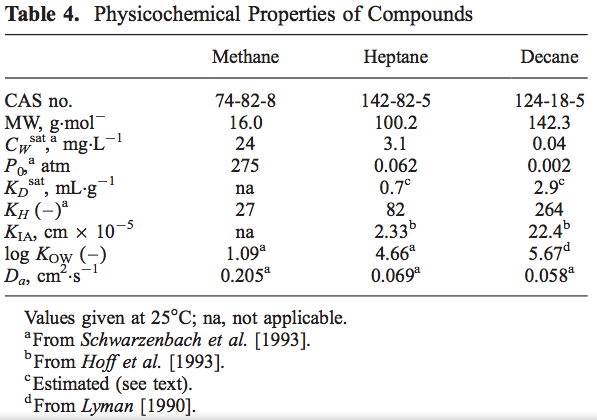 |
Like the previous example, references are given using footnotes, but this time they refer to individual data points instead of a row or column of data. | Costanza-Robinson and Brusseau (2002). |
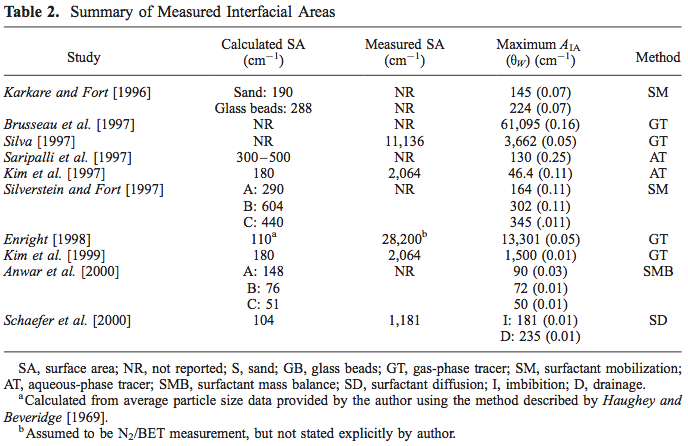 |
In this example, since multiple data are taken from each source, references to the original studies are provided in their own column. | Costanza-Robinson and Brusseau (2002). |
| Figure | What to note | Source |
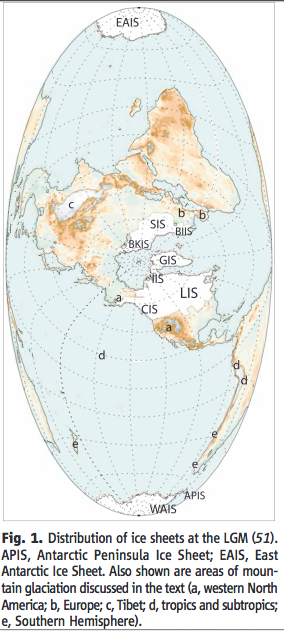 |
Because the whole figure is reproduced from another paper, the reference is given at the end of the title. | Clark et al. (2009). |
 |
The reference is given at the end of the caption here. | The undergraduate thesis of Alison Maxwell (Middlebury College). |
 |
Compared to the previous example, a more extensive reference is given at the end of the caption. | Vecchi et al. (2015). |
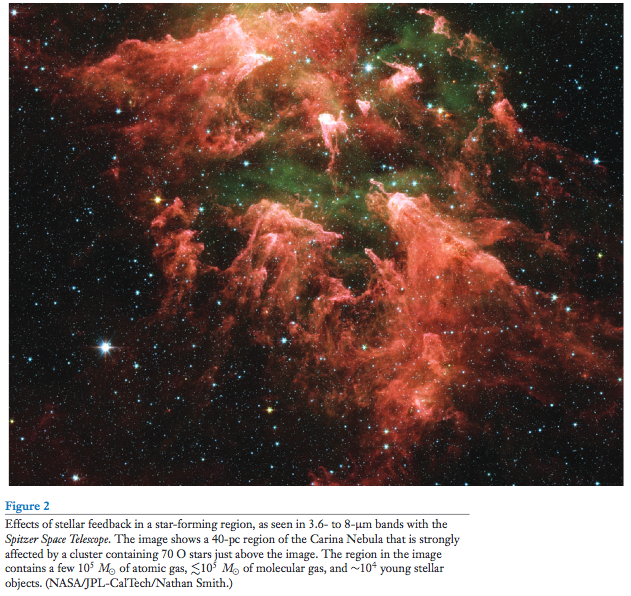 |
Even though this image was not originally from a peer-reviewed work, its source is still cited in the caption. | McKee and Ostriker (2007). |
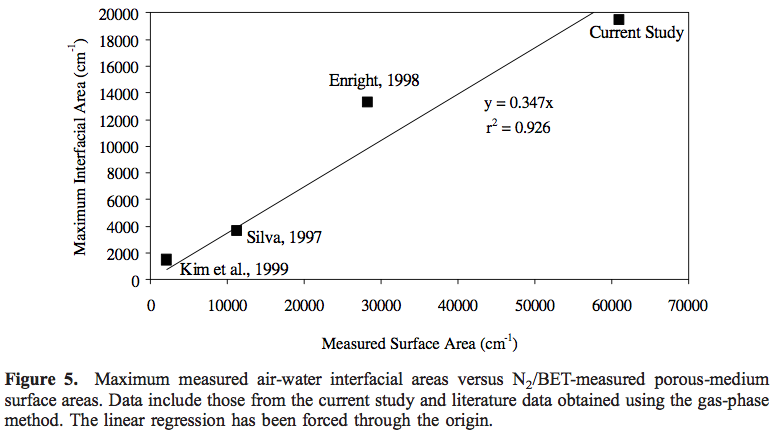 |
This example (as well as the following two in this table) use some original data and some from other sources. Here, the references refer to single data points within the chart itself. | Costanza-Robinson and Brusseau (2002). |
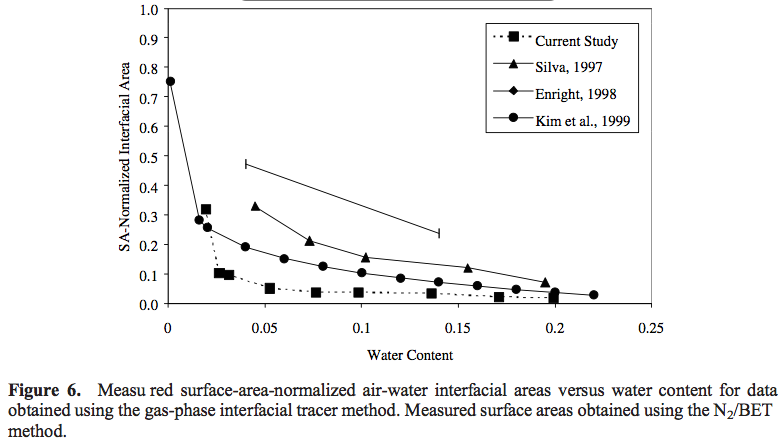 |
Like the above example, some of these data are original, and some are from other papers. Here, the borrowed data sets are referenced in the legend. | Costanza-Robinson and Brusseau (2002). |
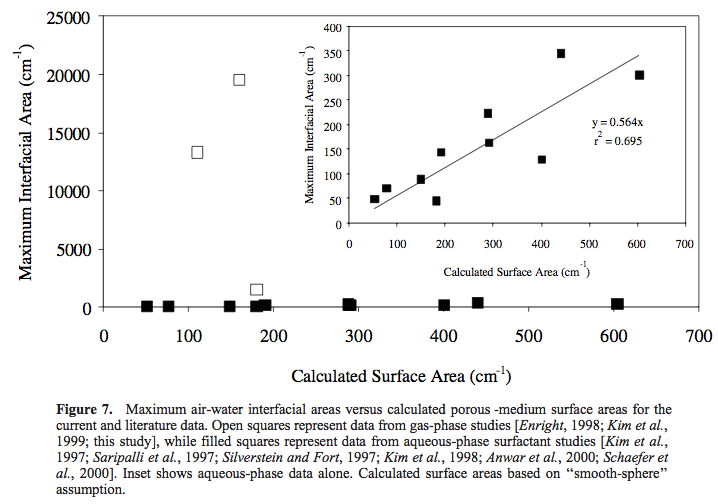 |
As in the previous two examples, some of these data are original, while some are not. For simplicity within the chart, the references are made in the figure caption. | Costanza-Robinson and Brusseau (2002). |
When trying to decide how you want to reference information in your own figure or table, ask yourself:
- How can I make it most clear where my data is from?
- How can I make it easiest for my reader to understand that this information is not my own?
- How does my choice visually add to or detract from my figure as a whole?
Remember–there are multiple adequate ways to reference information in a figure or table. Choose one that works best for your audience and purpose!
[bg_faq_start]
Lit-4: Test yourselfOf the given options, which do you think is a better way to cite the information that originally came from from a different work? Why? 1. a) b)
2. a) b) [bg_faq_start] Solutions
[bg_faq_end] [bg_faq_end] |
For more information on creating figures and tables, see our Using visuals page.
